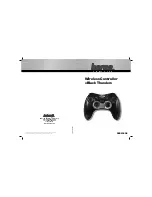
14
– Press the hose rupture protec-
tion device and the gas-flow
monitor (see “Taking into
operation”).
Anytime after making
changes, check the hose
connection to the cylinder valve
for leaks (see “Checking for
leaks in the high pressure area”).
Exchanging hoses
Please use the included screw-
ing tool to attach and remove
the high pressure hoses. It will
help you generate the neces-
sary tightening torque and will
prevent damage to the screw
fittings, which may otherwise re-
sult from using an improper tool.
Residual gas: No smok-
ing! No open flames!
– Close the gas cylinder’s valve.
– Unscrew the high pressure
hose from the gas cylinder (or
from the clip-on adapter) and
from the gas pressure regula-
tion system inlet.
When performing a
hose change, please
ensure that the gasket pro-
vided with the hose (hose
outlet – gas pressure regula-
tion system inlet) is correctly
installed and undamaged.
We recommend that the
gasket (part no. 50020-
76300) be replaced with every
hose change.
– Screw country-specific high-
pressure hose to SecuMotion
inlet and cylinder (or to clip-on
adapter).
– Open the gas cylinder’s valve.
– Press the hose rupture protec-
tion device and, if necessary,
the gas-flow monitor (see
“Taking into operation”).
Anytime after making changes,
check the hose connections to
the cylinder valve and to the inlet
of the SecuMotion gas pressure
regulation system for leaks (see
“Checking for leaks in the high
pressure area”).
Checking for leaks in the
high pressure area
A trained technician must
check the low pressure
area for leaks. In addition, we
recommend that the person re-
sponsible for operating the gas
system check the high pressure
area for leaks after every cylinder
or hose replacement.















































